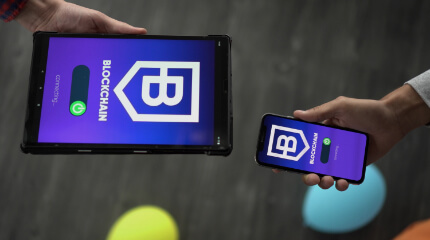Steps to Build An App Like Komoot: A Route Planning App
Nov 2025

Whether it's pleasure or work, travelling from point A to B is no fun if you lose your way. Asking people for directions may backfire. Travelling for work? No problem. All you lose is time and fuel. That said, when it comes to driving for work or commercial purposes, every second is precious. Missing out on a much-awaited business meeting or seminar can mean losses of thousands to millions of dollars. Being late for a job interview at a Fortune 500 company can be quite upsetting for an individual.
Instead of asking people for directions, people would benefit from using a route planning app like Komoot. Many people think it is pointless to use a route planning app. They think that when Google Maps is available, why use something else?. We hate to break it to you, but Google Maps is not always accurate. It makes mistakes at times. For complex routes with multiple stops, route optimization apps are often better than Google Maps. The route optimization app market stood at $7.92 billion in 2025 and is projected to reach $14.92 billion by 2030.
Who benefits from using route planning apps? From fitness enthusiasts, adventure travellers, and environment-conscious tourists to large enterprises, the list is endless. Developing an in-house route planning app can help them meet their specific needs. That said, creating a custom route planning app like Komoot may not be a cup of tea for everyone. This blog will cover various aspects of developing a route planning app like Komoot. These aspects include steps, benefits, challenges, and more. Let’s get started.
Why Develop a Route Planning App like Komoot?
Building a route planning app like Komoot can change the fortunes of companies if done right. In 2025, people are travelling more than ever before. The purpose could be work or leisure. People want a route planning app that provides personalized services while being simple and eco-friendly. Route planning app development makes it possible for companies to build a powerful yet affordable app. Below are reasons why companies may consider building a route planning app like Komoot.
1) Rising Demand
After the pandemic, there is a growing awareness among people regarding their health. They want to stay fit by indulging in regular physical activity. Even bikers, hikers, cyclists, and athletes want directions when they explore unfamiliar locations. These are not the only people who will benefit from such an app. Tourists and travellers desiring eco-friendly and low-carbon experiences also opt for such apps. Smart route apps can guide individuals along cycling lanes and walking zones.
2) Several Monetization Opportunities
App development companies can make money from route planning apps by offering several options. Users can choose from freemium and subscription models. Other ways to earn revenue include affiliate integrations and data insights. Shops selling travel/driving gear, providing accommodation, or tour guide operators can generate indirect revenue for app companies. Selling anonymized route data to city planners and other bodies (with consent) could also generate more revenue.
3) Partnership Possibilities
Route planning app development creates opportunities for partnerships with tourism boards, outdoor brands, and local businesses. Partnering with tourism boards to promote tourist trips and other attractions can increase visibility and revenue. Brands like Decathlon and local businesses such as cafes and restaurants also pay apps to advertise their businesses.
4) AI-Driven Personalization
Integrating artificial intelligence with a route planning app helps users reach their destination quickly with minimal hurdles. An AI-powered route planning app considers various factors, such as the following.
- Distance
- Traffic
- Time Constraints
- Delivery Location
- Vehicle Capacity
Additionally, the app also takes into account customer-specific requests, priority tasks, and real-time changes. This helps it determine the optimal route along with the estimated time. Voice-powered search and AR navigation provide live insights plus immersive experiences.
5) Competitive Advantage
A route planning app with innovative features and optimal navigation will get more downloads. These users will recommend the app to others, especially those prioritizing sustainability and health. Other features that add to the popularity of route planning apps include community sharing features. Examples of such features include route sharing and challenges. This will further boost engagement. Integrating the app with other companies and third-party apps creates opportunities for cross-sector innovation.
6) Technological Feasibility
APIs and SDKs make it easy to add maps and route calculations without developers having to put in extra effort. ML helps the learn from real-time data and suggest optimized travel routes. Also, using Flutter or React allows developers to create cross-platform apps.
12 Key Features to Include When Developing A Route Planning App Like Komoot
When building a route planning app like Komoot, users must have an engaging yet fruitful experience. The route planning app must live up to its name. Besides guiding users along the way, it should also adapt to the terrain and their skill level. Often, many far-off locations don’t have good connectivity. An advanced route planning app has features such as real-time navigation, offline maps, and rerouting to help users find their way. Other features, such as community support, wearable integration, along gamification options, make it worthwhile.
Below are some of the key features to include when developing a route planning app like Komoot.
- Route Planning and Generation
Allows users to plan their journeys with start/end points while auto-generating routes for hiking, cycling, or running.
- Navigation
Effective navigation combining visual and audio assistance, plus real-time data such as location, data, speed, and ETA.
- Offline Maps and Support
Enables users to download maps of specific locations without an internet connection. Perfect for remote areas with poor connectivity.
- Community and Highlights
With this feature, users can share images of their trips/outings/contests, and more. The community sharing feature also allows users to share optimized routes for better experiences.
- Multi-Device and Integration Support
Synchronizes routes and progress on routes across multiple digital devices. It also connects with wearables and GPS devices for importing/exporting data.
- User Profile and History
Remembers past activities, preferences, and other details about users. Users can also save/refer to routes they have explored before and share them with fellow users.
- Smart Discovery
Algorithm-based recommendations for suggesting customized routes to users. These routes are based on their past activities, preferences, and real-time conditions.
- Gamification Elements
Gamification elements such as badges, points, challenges, and leaderboards motivate users to go the extra mile. They also encourage healthy competition and boost engagement.
- Multi-Day Trip Planning
This feature allows users to plan trips that last for many days. Splitting trips into multiple segments and adding places for refueling/lodging makes it more effective.
- Live Tracking and Weather Integration
Enables users to share live location with friends/family. Alerts users in case of bad weather or other dangers along the route.
- Data Export
Allows users to import/export GPX or FIT files to use on other apps and connected devices.
- Monetization Features
App companies can adopt a freemium model for basic features. They can simultaneously offer a premium model with features such as offline maps, device integrations, and in-app purchases.
Are you interested in developing a route planning app like Komoot? Team up with a professional app development company that considers your target audience, vision, and objectives.
6 Steps To Developing A Route Planning App Like Komoot
Below is a concise roadmap to building a route planning app like Komoot.
1) Gathering Requirements and Market Research
The first step is to identify the target audience. What features do they want in a route planning app? What experiences do they expect? It is also crucial to choose the appropriate platform. Deciding on monetization options early on is also important. Don’t forget to document technical and functional requirements.
2) Design and Prototyping
Will the app’s look and functionality meet user expectations? Work on the user flows that focus on what happens once a user performs a particular action. This action could be opening/closing the app or even checking a profile. The next step is to create wireframes. Wireframes are nothing but basic drawings of different screens. These will highlight the location of buttons, maps, menus, and more. The last step is to create a clickable prototype for testing the app.
3) Backend Development
In the third step, it is time to set up servers, databases, and APIs for different user accounts, routes, and map data. Integrate geospatial data with popular mapping services. Lastly, implement routing algorithms while syncing data across diverse devices.
4) Fronted Development
The frontend is the part that users interact with directly. App development companies must create screens that allow people to see maps, plan their routes, and get detailed instructions. Also, the app must have features to help users save their favorite routes while facilitating real-time location tracking and community sharing. Offline functionality is also a must to ensure a smooth and responsive experience for users.
5) Testing and Bug Fixing
Testing is crucial before the app goes live. Every feature and functionality must work flawlessly. Testers and others must check if all the features work properly, along with the app’s speed and real-life performance. In case of a performance issue, the app development company must fix it asap. Pay attention to battery usage during system-intensive tasks such as using maps.
6) Deployment and Maintenance
After thorough testing, the app should be published on the right platforms. Deploy the app on the cloud for optimal scalability. This will allow the app to handle increased user volumes. Add new features whenever required, and fine-tune existing ones. Listen to user feedback and improve the app over time.
Want to develop a custom route planning app like Komoot with strict supervision? Consider hiring dedicated developers with relevant experience and knowledge.
10 Factors Affecting the Cost to Develop a Route Planning App Like Komoot
Developing a route planning app like Komoot requires companies to adopt a structured and well-planned approach. Or else, the development and other costs may get out of control. App development companies must be aware of the costs they will have to incur when building a route planning app like Komoot. Being mindful of these costs will help them approach the project with total clarity while minimizing errors. Below are the 10 factors that affect the cost to develop a route planning app like Komoot.
1) App Complexity
- The complexity of the app greatly affects development costs. Including more features and integrations will increase the overall app development costs.
- Estimated costs - For basic route planning apps, the costs range from $15,000 to $35,000. Cost for advanced and highly complex apps can be anywhere from $100,000 to $250,000 or more.
2) Design Complexity
- Building a route planning app with an intuitive and user-friendly design requires companies to hire skilled and experienced UI/UX developers.
- Estimated Costs - The estimated cost to hire experienced UI/UX developers ranges from $5,000 to $15,000.
3) Backend Development
- Focusing on backend development ensures that the route planning app manages everything that happens behind the scenes. This includes data storage, remembering saved routes, providing the right directions, and tracking app usage.
- Estimated Costs - Building a scalable backend infrastructure for a route planning app like Komoot can cost anywhere from $20,000 to $50,000.
4) Third-Party Integrations
- Route development apps must integrate services such as Google Maps, Mapbox, or Strava. This ensures users can access apps, navigate routes, and access relevant data. Although these integrations make the app feature-rich, they add to the complexity and costs.
- Estimated Costs - Depending on the number of integrations and complexities, the costs can range from $10,000 to $30,000.
5) Security Considerations
- Since a route planning app like Komoot must handle sensitive user data, it must have the necessary security features. These security features include encryption, data storage, and ensuring compliance with regulations.
- Estimated Costs - Security-related costs can range from $5,000 to $15,000.
6) Compliance Measures
- The route planning app must ensure adequate compliance with local data protection laws (for example, GDPR). This ensures the privacy of user data and avoids fines.
- Estimated Costs - Compliance-related costs can range from $2,000 to $10,000.
7) Platform Selection
- The choice of platform for building a route planning app like Komoot greatly affects development costs. Are you developing a route planning app for iOS, Android, or all three?
- Estimated Costs - Cross-platform app development can cost anywhere from $50,000 to $100,000. On the other hand, native development costs can range from $100,000 to $200,000.
8) Technologies Used
- Generally, developers use Swift or Kotlin (native iOS and Android development), and Flutter/React Native for cross-platform route planning app development. Popular choices for backend include Node.js, while Java is preferred for handling route data, maps, and user info.
- Estimated Costs - Depending on the technologies used, the costs can range from $10,000 to $30,000.
9) Chosen Features
- Route planning apps like Komoot have advanced features such as offline maps, multi-stop routing, and real-time route optimization. Such features are great for user engagement, but the complexity increases development costs.
- Estimated Costs - The estimated costs can range from $20,000 to $50,000.
10) Maintenance and Updates
- Launching a route planning app is only the tip of the iceberg. There is a lot of work to be done after that. App development companies must update it regularly and fix bugs, if any. This will keep the app up to date and secure.
- Estimated Costs - For a route planning app like Komoot, the ongoing maintenance costs can hover anywhere from $10,000 to $30,000.
Interested in route planning app development for your company? To build a route planning app like Komoot, companies should consider partnering with a reputable and experienced app development company. There is no time for trial and error, and there is money involved. Take no chances. Team up with a company that understands your needs and works accordingly.
10 Challenges Faced when building a route planning app like Komoot
Below are ten challenges that companies have to face when building a route planning app like Komoot.
1) Ensuring Accurate Map Data
The solution lies in integrating well-known API such as OpenStreetMap and implementing custom data validation layers. This will ensure precise, latest, and context-aware map data.
2) Offline Navigation
Using the app without the internet while ensuring optimal navigation is a challenge. This challenge can be solved by enabling map caching and route computation.
3) Route Optimization
Route optimization apps must help users find the best route to their destinations. To achieve this objective, apps must use graph algorithms that identify the best route for users. These algorithms consider the terrain and individual user preferences.
4) Elevation and Terrain Analysis
A good route planning app must identify the most difficult parts of the routes and bring them to the user’s notice. Using a digital elevation model enables the map to create an exhaustive 3D map of the terrain. Then it suggests the best route for users, making driving safer and smoother.
5) Real-Time Updates
When navigating a terrain, users may face a problem due to unexpected changes such as heavy traffic or bad weather. The solution lies in using live data feeds. With these live data feeds, the app checks if the current route is okay and suggests a better one if required.
6) Battery Consumption
Route planning apps like Komoot consume a lot of battery power when using GPS and accessing maps. This problem can be solved by implementing robust background location tracking and vector tiles.
7) Personalization
Mostly, when a user chooses a particular route, he does it based on his needs. These needs include the distance that needs to be covered, comfort, weather, and more. Training the recommendation models using user behavior and historical data improves their effectiveness.
8) Scalability
Route planning apps must be able to support millions of users and identify the best routes for them. This can be challenging. The solution lies in using microservices, caching layers, and spreading the data across multiple servers. This approach ensures excellent app scalability.
Do you find it challenging to develop a route planning app like Komoot? Consider partnering with one of the top app development companies with a proven track record.
Final Thoughts
When developing a route planning app like Komoot, companies should not blindly imitate successful apps. What works for Google Maps may not work for others. Many companies try too hard to be unique and ignore user needs. They get carried away and neglect performance, neglect UI, and do not consider personalization.
The secret to success lies in understanding user needs, including personalization, and having a clear monetization plan. After all, a route optimization app is no good if it does not make money. Besides profitability, companies must also focus on safety and scalability. It would make sense to work on the MVP first and add more features over time.
Do you want to develop a route planning app like Koomot by adopting a calculated approach? Consider partnering with a world-class app development company like Hyperlink InfoSystem. Speak to one of our experts to find out what we can do for you.
Frequently Asked Questions
The biggest challenges associated with iPhone app development include dealing with the app store requirements and adapting to different screen sizes (of new and earlier models). Other challenges include ensuring optimal app performance, testing it, and standing out from the crowd. Success does not come easy. Partnering with an iPhone app development company is the solution for companies that want to hit the jackpot.
Android app development is the ultimate choice when companies desire flexibility and reach a wider audience. Also, companies can use open-source tools to build Android apps and keep distribution costs to a minimum. Google Play Store does not have as many restrictions as its iOS counterpart. When cost-effectiveness and reach are the objectives, Android app development is the best approach.
The cost of hiring dedicated developers in India depends on the app development company, their experience, project complexity, and many other factors. However, hiring app developers in India can cost anywhere between $12 and $50 per hour. Compare it to per-hour costs in other countries.
- North America - $35 - $75/hour
- Europe - $25 - $75/hour
- Asia - $20 - $30/hour
- Latin America - $20 - $40/hour
It all depends on the complexity of the app, the technologies used, and other factors. A simple route planning app can be ready in 3 to 4 months. However, the case is different for apps like Komoot. An MVP app is achievable in 6 months, while advanced ones with complex features can take anywhere from 12 to 15 months for companies to develop.
Things have changed considerably in the last 5 years. Below are some of the latest trends in route planning app development.
- AI-Powered Route Optimization
- Autonomous vehicles and EV integration
- Cloud-Powered Route Scheduling
- Sustainability-Focused Features
- Enhanced User Experience with 3D Visualization
- Real-Time Tracking and Notifications
The benefits of a route planning app are as follows.
- Optimized routes and reduced fuel consumption.
- Multi-stop planning, dynamic rerouting, voice-powered guidance.
- Reduced planning time and improved scheduling.
- Optimal fleet management and customer satisfaction
- Analytics and reporting for improved decision making
- Reduced emissions and eco-routing
- Accident and hazard alerts
- Offline access
- Geofencing and tracking
Latest Blogs

Is BlockChain Technology Worth The H ...
Unfolds The Revolutionary & Versatility Of Blockchain Technology ...


IoT Technology - A Future In Making ...
Everything You Need To Know About IoT Technology ...

Feel Free to Contact Us!
We would be happy to hear from you, please fill in the form below or mail us your requirements on info@hyperlinkinfosystem.com
Hyperlink InfoSystem Bring Transformation For Global Businesses
Starting from listening to your business problems to delivering accurate solutions; we make sure to follow industry-specific standards and combine them with our technical knowledge, development expertise, and extensive research.
4500+
Apps Developed
1200+
Developers
2200+
Websites Designed
140+
Games Developed
120+
AI & IoT Solutions
2700+
Happy Clients
120+
Salesforce Solutions

40+
Data Science

















